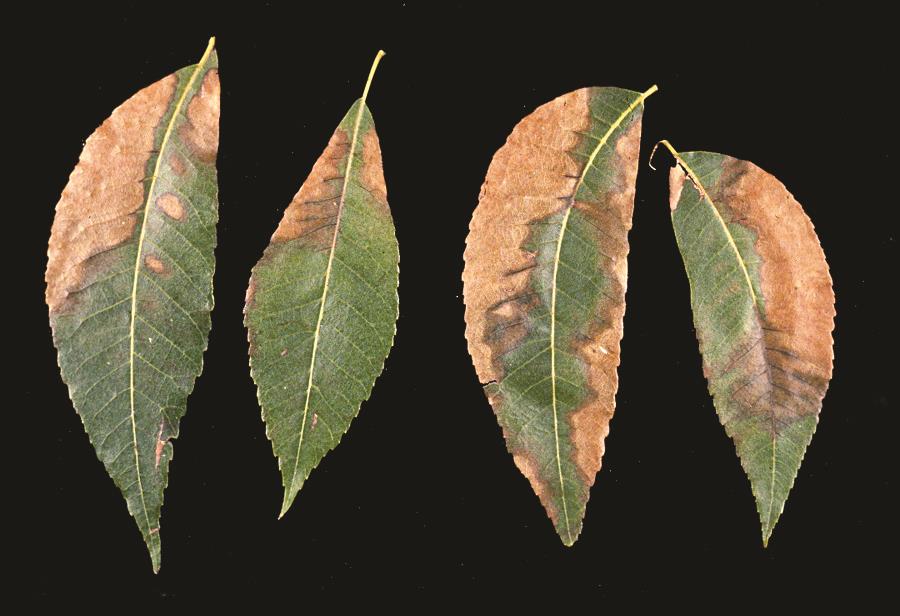Disease Gallery
Disease Details
Bacterial Leaf Scorch
Xyllela fastidiosa
Not yet found in Oklahoma, but may appear in southern counties near Red River in the future. An infected branch may die in one year or may live for a few years with the infection depending on genotypic and environmental factors. The disease can cause large economic loss over the lifetime of infected trees.
Caused by a bacterium that lives in the xylem tissue of the branch and is spread by leafhoppers and spittlebugs. It is not known how the pathogen infects trees in nature, but it is suspected that it is transmitted by xylem-feeding insects, such as leafhoppers, because that is the typical method of pathogen spread in other hosts. The pathogen can be transmitted through pecan scion wood and this may be a significant source of infection because pecan cultivars are clonally propagated. It is not known how the environment affects disease development.
Symptoms usually begin in mid-summer; leaflets turn brown beginning at the tip and outer margins and leaflets abscise soon after they begin to turn brown. Symptoms may occur throughout a tree or be only on a few of the scaffold limbs. Defoliation of over 60% has been recorded on trees with severe symptoms. Infections are chronic and the disease is usually present every year to some extent. Leaves show scorching on margin going inward and drop off, leaving petiole attached to shoot. Flower clusters may set berries, but do not mature. In fall, infected shoots mature in patchy manner, leaving spots of green tissue surrounded by dark brown mature wood. May delay budbreak and new shoots are stunted.
